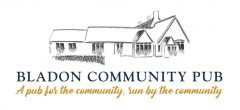Once the buying of the building is complete there are three common options for the running of a community pub:
- Tenant Run
- Manager Run
- Community Run
Each approach has its own merits and each has an influence on the level of business risk and time investment required from the community.
Tenant Run
Under this model, the pub is let to a tenant landlord who runs the business independently. The Community Benefit Society, which owns the pub, would receive an annual rental income. This means there is a predictable annual income for the Society, immune to potential fluctuations in operating income. The financial risk for operating the pub belongs to the tenant, including the ability to profit from periods of success. If any debts are incurred, these are also the responsibility of the tenant.
In terms of the day-to-day running of the pub, this is the responsibility of the tenant and under their control. The Society can have an influence by making provisions in the lease related to aspects of the running of the pub. For example, some community pubs in Oxfordshire stipulate agreed opening hours, or the agreement for the pub to a monthly community event of their choosing. It would also be expected that an incoming landlord would listen to the preferences of the surrounding local community. The recent community consultation and survey outlined clearly what the village would like to see from a local pub.
Having a tenant in place reduces the required involvement from the Society, both in terms of time and money. Tenants can bring valuable expertise in the pub trade. Of course it does mean that a suitable tenant needs to be found and retained. However, the visible backing of the village provides a strong indicator of the potential success for the business and therefore its attractiveness to potential tenants.
Manager Run
In this scenario, the Society would hire a manager to run the pub. The manager would employ additional staff and handle the day-to-day running of the pub, under the guidance of the Society. With this operating model, the Society would have more control and input into the running of the pub, however this would come at the cost of greater financial exposure and a larger investment of time. In addition to costs related to employment, the Society would also be required to initially fund the business until it became self-sustaining. Additionally, any downturn in profits due to lower custom or higher than expected expenses would directly impact the finances and therefore viability of the Society.
Community Run
In this scenario, the community would actively run the pub on a volunteer business. All costs associated with the running of the pub would be borne by the Society and staffing costs would either be minimal or non-existent. This model does however require a large ongoing investment of time from the community, as well as access to requisite skills to run a successful pub business. It may be more suitable for smaller settlements where the pub may be serving multiple functions or only be open at reduced hours.
Which Model is Right?
As can be seen, each model has its place and ultimately the right choice will depend on the pub itself and the surrounding community that it serves. The majority of community pubs in the UK have so far followed the route of finding a tenant or a manager. In the case of the White House, the Society believes that the tenanted model provides the lowest risk starting point with the least impact on the community. However, this does not mean to say the community can’t get involved. Indeed, there will be a great need for the volunteering of time and skills in order to get the pub up and running in the first place.
Whichever model is chosen, it is worth noting that 100% of the UK’s community pubs continue to survive and thrive.
Ultimately the ongoing support of the community through regular usage of the pub will be more important to its success than the initial choice of operating model.
